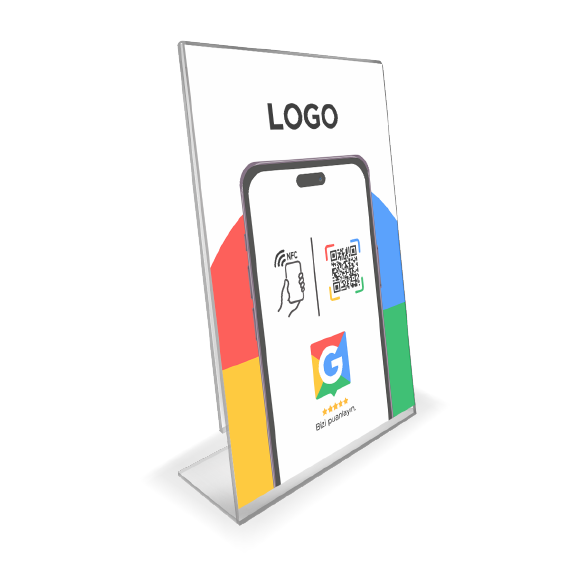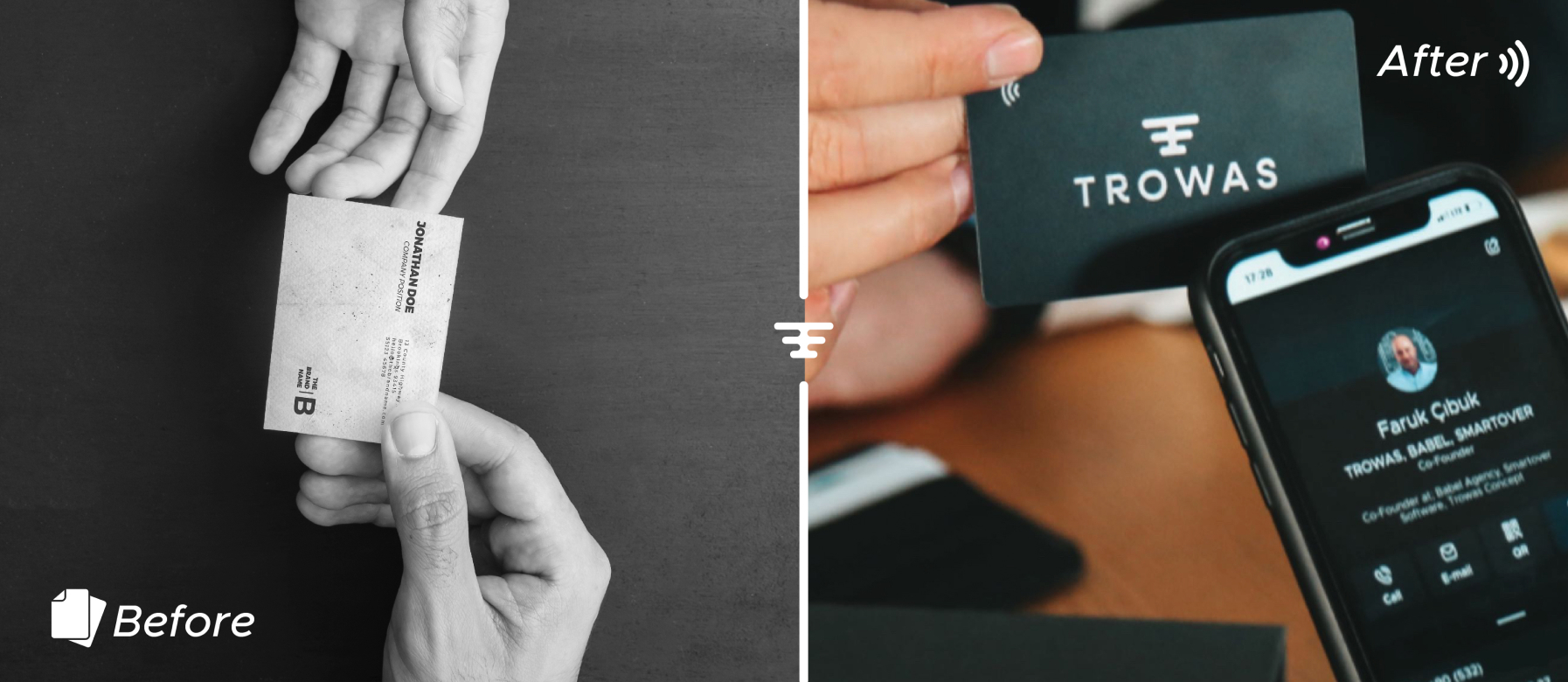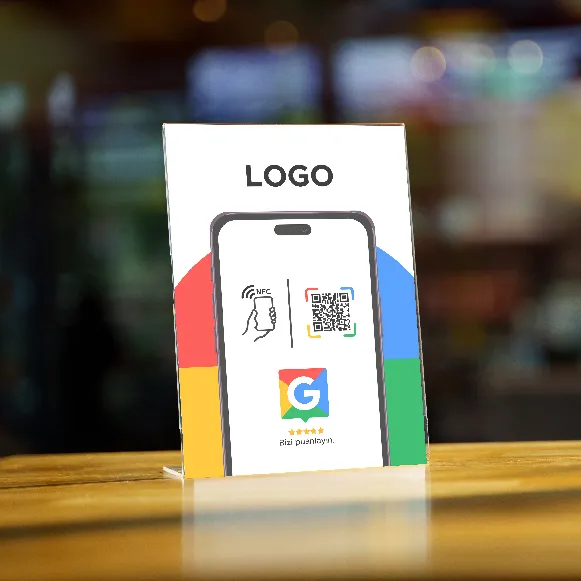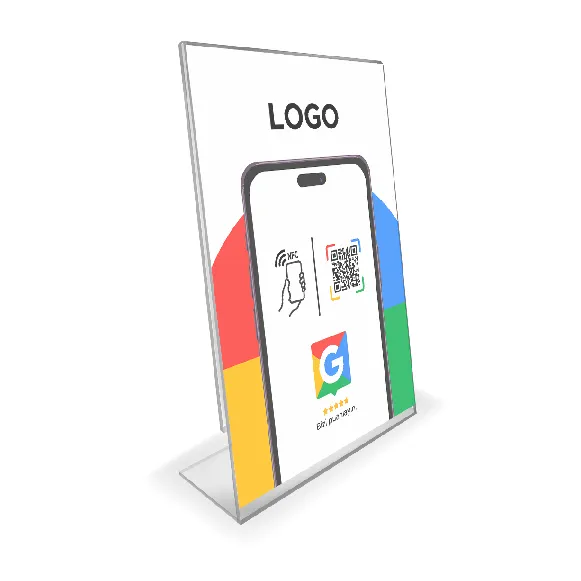What is a QR Code?
QR codes (Quick Response codes) are two-dimensional barcodes designed in a rectangular shape, square form, and typically in black and white colors. First developed in 1994 in the Japanese automotive industry, they have rapidly gained widespread use in various applications due to their high-speed data access and storage capacity. A QR code is designed to quickly and reliably transmit the information it contains (such as website addresses, contact details, product information). These codes are formed by arranging squares and patterns according to specific algorithms and can be read with high accuracy during scanning. Their most basic features include high capacity and fast reading times. Easily scanned via mobile devices and smartphones, QR codes allow users to access content in seconds using any application or camera. Furthermore, because they work flawlessly in physical environments and can be easily placed on various surfaces, they are widely preferred in marketing, retail, education, and service sectors. Today, QR codes not only store information but also offer various functions such as interacting with users, making payments, and providing directions. QR codes used on electronic cards, product labels, or promotional stands enhance the customer experience by providing accurate and fast access. At this point, with the advancement of technology, QR codes have begun to offer more effective and secure usage opportunities by integrating with NFC. As a result, QR codes, with proper use and security measures, produce powerful and sustainable solutions in their field, providing easy access and information transfer tailored to user needs.
Advantages of QR Codes
The advantages offered by QR codes have led to the intensive use and preference of this technology. First of all, QR codes offer low-cost and applicable solutions. They can be quickly created without the need for any complex physical infrastructure and can be easily integrated with various platforms. In this way, they provide cost efficiency while also saving time. Users can quickly scan QR codes with their smartphones to access the necessary information, participate in promotions, or provide feedback. This gives businesses and brands the opportunity to directly improve the customer experience. Furthermore, QR codes have a wide range of uses. They can be placed on labels, brochures, advertisements, or product packaging. Thanks to their reliability and speed, they bridge the gap between the physical and digital worlds. With this feature, they help increase brand awareness and multiply customer engagement. When positioned upright, they can create aesthetic and functional designs, ensuring information flow without compromising visual integrity. Furthermore, information accessed via QR codes can be dynamically updated, offering businesses the opportunity to continuously provide innovation and up-to-date content. In terms of security, user data can be protected with appropriate encryption and access protocols. Considering all these factors, the advantages offered by QR code technology provide high added value for both businesses and users. For this reason, its use is rapidly spreading across various sectors, and its application areas are expected to expand in the future.
Areas of QR Code Use
QR codes offer practical and effective solutions in various sectors with their wide range of uses. In the retail sector, QR codes are used instead of product barcodes to allow customers to easily access product details, promotions, or payment pages. In service sectors such as restaurants and cafes, making menus accessible via QR codes provides advantages in terms of hygiene and accessibility. In education, they ensure that students and teachers can quickly access materials and event announcements, while in healthcare, patients can instantly view their prescriptions or treatment plans using QR codes. Furthermore, at events and trade shows, QR codes on admission tickets or information cards facilitate participants' quick access to programs and information resources. In digital marketing and advertising campaigns, QR codes also increase engagement by directing users directly to campaign details. Alongside visual and written content, QR codes are integrated with NFC technology to offer contactless and fast access. Therefore, organizations and institutions from a wide range of industries actively use QR codes to promote their products and services, accelerate information flow, and improve user experience. These applications stand out as important tools for both reducing costs and increasing ease of access and interaction for users.
NFC Technology
NFC (Near Field Communication) technology is a communication protocol that enables short-range wireless communication and makes data exchange fast and secure, especially through mobile devices. NFC technology, used in comment cards and stands, stands out as an important element that improves user experience and increases interaction. One of the key advantages of NFC is that it allows users to receive and send information simply by bringing their devices close together, without having to enter anything or touch any product. This feature enables fast communication without the need for physical contact or camera focusing, unlike QR codes. Furthermore, NFC technology facilitates digital and smart interactions; when users bring their NFC-enabled smartphones close to the relevant card or stand, they are automatically directed to the relevant web page, access promotions, or fill out feedback forms. This saves time and increases user interest. NFC has a wide range of applications. It is preferred for interactions such as displaying menus, product information, and customer feedback in restaurants and cafes. At events and fairs, it is used to provide visitors with instant access to information or to facilitate voting and survey applications. Furthermore, NFC technology is also used in product labeling and identity verification processes. In terms of security, NFC communication carries less risk of interference than other wireless technologies due to its short range, providing an advantage in ensuring data security. For this reason, it is preferred by users and institutions, with great importance placed on protecting data privacy. In conclusion, NFC technology is a communication tool that enriches the user experience, facilitates interactions, and prioritizes security. Its integration into comment cards and stands stands out as an important step towards increasing customer satisfaction and offering innovative solutions in the digital age.
What is NFC?
NFC (Near Field Communication) is essentially a high-frequency technology that enables two devices to communicate wirelessly over a short distance. This technology enables contactless and fast data exchange between devices and is generally effective at a distance of a few centimeters. NFC technology was developed as a derivative of RFID (Radio Frequency Identification) technology and provides high security and user-friendly features with lower power consumption. It is widely used in many areas such as smartphones, payment systems, ticketing, and access control.
The basic operating principle of NFC is short-range data transfer via integrated circuits and high-frequency radio waves. This allows users to share information between devices without the need for any physical connection. Furthermore, for two devices to communicate during NFC activities, they must be close to each other, which ensures secure and controlled communication. The ability to operate without a power source and establish fast connections are important factors in the preference for NFC technology.
Solutions such as Google Hangouts Cards and stands adopt NFC technology because they provide users with easy and quick access. When users touch an NFC tag or chip-based card, they are automatically directed to the relevant platform or receive information. This offers a more practical and error-free experience compared to QR codes. NFC technology also enables secure contactless payments, allowing users to complete transactions quickly and safely.
In the evolving digital world, NFC's short-range communication advantages play a significant role in marketing and customer engagement. Thanks to high security levels and fast access, the user experience is improved and customer satisfaction increases for businesses. Therefore, NFC technology stands out as an indispensable tool in new generation promotion and interaction solutions.
Advantages of NFC
One of the most important advantages of NFC technology is its fast and practical data transmission. Users can share information directly and contactlessly, without the need for a screen or camera, unlike QR codes. This provides significant convenience and saves time, especially in busy and fast-paced environments. Furthermore, NFC's ability to establish contactless connections offers a significant advantage in terms of hygiene and health; physical contact is minimal, and communication can be achieved without contact. This feature has accelerated the adoption of applications during and after the pandemic, reinforcing users' sense of security. NFC technology is also very easy to set up and use. Thanks to NFC tags integrated into cards or stands, transactions can be carried out without the need for any additional hardware or complex setup. Users can quickly exchange information by activating the NFC feature on their phones without requiring any expertise. Furthermore, the security advantages of NFC technology should not be overlooked. In contactless communication, data encryption and authentication processes ensure information security. This minimizes the risk of malicious access while protecting privacy and data integrity. Finally, NFC has very low energy consumption. This provides a significant advantage in terms of long-term use and ensuring continuous activity. For all these reasons, NFC technology is a preferred, secure, fast, and convenient alternative, especially in digital and contactless communication solutions.








